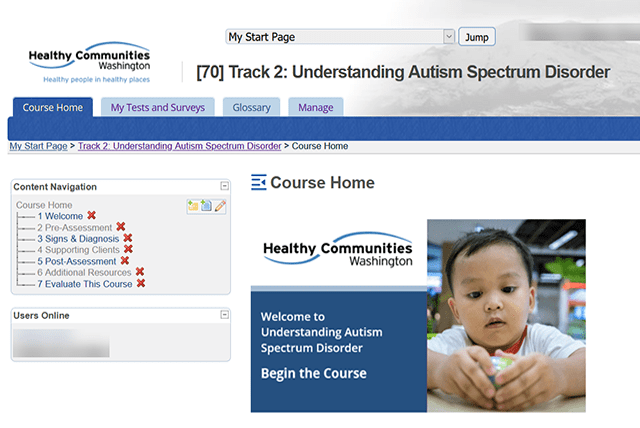Remote training is widely available, but some people still have some strong objections. It’s important to deal with any objections that may arise so you can keep your program on track.
Understand and deal with common concerns, and you can make sure of a successful virtual learning experience for all learners.
It’s easy to forget that stakeholders probably haven’t done the same amount of research that you have.
So this means they might not be aware of skills gaps or updated options for training. Sometimes, they may feel resistant to change. This can make it hard to earn their support.
Still, you will need their support. This is especially true if you hope to get budget approval for the online professional development investment you’re interested in.
That’s why we put together some of these pointers that you can use. Try them when answering common objections to online learning and getting approval from managers, supervisors, directors, finance people and others who are in charge of paying for training programs.
Relate the Benefits of Remote Training
The benefits of remote training are significant, despite the doubts some people may have about online learning. These doubts are understandable. Some may worry about the transition from in-person to computer-based programs and how it will affect their organization.
One valid concern is the cost of implementing a new training approach. However, you can explain that remote training allows staff members to keep learning when they’re not in a meeting room but learn from their computers.
On the other hand, some skeptics may have less valid reasons for opposing remote training. Maybe they hate computers. Or they fear change. Some could simply be hesitant due to a lack of trust in the enthusiasm and effectiveness of remote training.
Whatever the reason, it will help you make your case if you can put yourself in the doubters’ shoes. Understand why they might be hesitant to embrace remote training. That way, you can come up with specific solutions to overcome their reservations. You can make a compelling case for the benefits of remote training.
Hybrid learning is here to stay. This e-course covers everything you need to know about how to prepare for a hybrid learning project, from earning buy-in to the must-have elements for successful virtual collaboration. Access it here.
Focus On Training Benefits for Buy-in
It’s important to understand the benefits of remote training rather than just its features before dealing with objections.
Why?
Because benefits explain how the training can help them. You might be enthusiastic about features like blogs, forums, and tracking and analysis in your learning management system. But most people are more interested in knowing how the program will solve their specific problems.
Remote training brings several advantages. It offers flexibility and convenience since learners can access it from anywhere and at any time. It also eliminates the need for travel, saving time and money on in-person training. Additionally, remote training can be recorded, allowing learners to refer back to the material whenever they need it. By emphasizing these benefits, you can help learners understand the value of remote training and address their concerns.
Here are some great examples of some of the biggest features and benefits of remote training to prime your next discussion:
Instead of … “Remote training is self-paced.”
Instead of saying, “Remote training is self-paced,” explain the benefits in a more tangible way. Say: “We can save $20,000 per year by eliminating monthly in-person training sessions.”
Here’s why it’s better: Being able to take training remotely any time leads to practical advantages. For instance, you can cut down on trainer expenses, avoid purchasing training materials and free up the time reserved for instructor-led training. Calculating the estimated savings of $20,000 per year will strengthen your argument for the switch to remote training. This way, you can show the real-world benefits of the new approach and gain support for the change.
Instead of … “Online training serves multiple learning styles.”
Instead of using jargon like “online training serves multiple learning styles,” be clear and straightforward. Say: “Online training improves engagement because the information is presented in different formats.”
Here’s why it’s better: Instead of using technical terms like “learning styles,” it’s more effective to focus on the outcome. With online training, the information is presented in various ways, which makes it more engaging for learners. This is important because you’re trying to equip your staff with new skills for their jobs. It’s vital that they remember and retain the knowledge. This practical result is much more important to your organization than using educational jargon. By highlighting the improved engagement and varied presentation of information, you can address one of the most common objections to online training. Address the belief that it’s less effective than in-person training.
Instead of … “It’s computer-based.”
Try: “It’s good for the environment. A study found that distance learning consumed nearly 90% less energy and produced 85% fewer CO2 emissions than ordinary campus-based university courses.”
Why it’s better: Back up your claim with facts. The fact that your program is computer-based training isn’t much use. But a study like the one here from Britain’s Open University can back your claim about why it’s important. Eventually, your discussions will be broken down into key features and if they’ll work with your organization. In the beginning, it helps to think about what kind of effect a new remote training program will have and why.
When learners see the positive results and benefits that others have experienced through remote training, they’re more likely to be convinced of its effectiveness.
Deal with Concerns About Engagement and Interaction
One common concern about remote training is the lack of engagement and interaction compared to in-person training. Learners may worry that they won’t have the same opportunities to ask questions, participate in discussions or receive tailored feedback.
It’s important to bring attention to the interactive features of remote training platforms. Many platforms offer features such as chat boxes, virtual breakout rooms, and polling tools that can help engagement and interaction.
Also, trainers can encourage learners to actively participate by asking questions, sharing their thoughts and working with others. By facing concerns about engagement and interaction, you can help learners feel more confident and excited about remote training.
Provide Clear Communication and Support
Clear communication and support are important for successful remote training. Learners need to feel that they have access to the necessary resources and guidance throughout the training process. This can be done by providing clear instructions and expectations at the beginning of the training, as well as offering ongoing support and help. Trainers should be available to answer questions, make things clear and offer guidance when needed.
Also, it can be helpful to create a dedicated communication channel, such as a group chat or discussion forum, where learners can easily reach out to trainers and fellow learners for support. You can help learners feel more comfortable and confident in their remote training experience by putting clear communication and providing ongoing support first.
Offer Flexibility and Personalization
One of the key objections to remote training is the lack of personalization and flexibility compared to in-person training. To deal with this concern, it’s important to offer options that respond to individual needs and preferences. This can include providing different formats for training materials, such as written guides, video lessons or interactive modules.
What’s more, allowing learners to choose their own pace and schedule for completing the training can help them feel more in control and engaged. Offering opportunities for personal feedback and one-on-one coaching sessions can also improve the learning experience and deal with individual concerns. By offering flexibility and personalization, you can overcome objections and create a more effective and engaging remote training program.
Apply these tips to put yourself and your team a much better position to let your fellow workers know why online learning can be useful.



